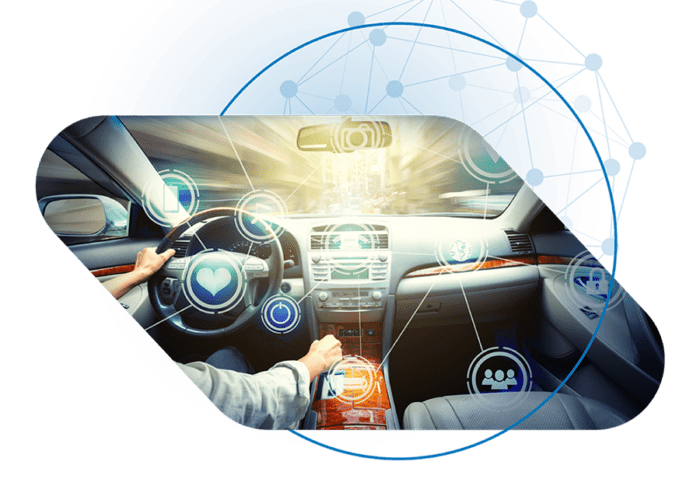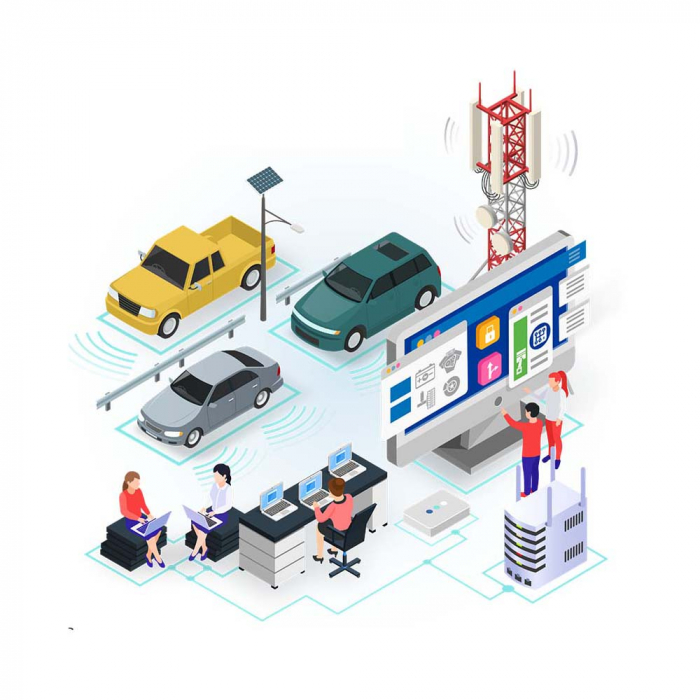According to the National Highway Traffic Safety Administration, around 11,000 tire-related crashes occur each year. In 2016, more than 730 of these crashes resulted in fatalities. Tire Pressure Monitoring Systems (TPMS) have become an important preventative measure to increase safety on the highways by warning drivers of low tire pressurea main cause of tire-related crashes.
TPMS improve vehicle handling, decrease unnecessary wear, reduce braking distances, improve fuel economy, and minimize tire-related crashes simply by increasing driver awareness of their tire conditions. Traditional TPMS have limited functionality in that all tire issues are represented by in the same way: a dashboard light is triggered when low pressure is detected. IoT technology can improve these systems by providing more accurate and easy-to-visualize data regarding tire condition, allowing drivers to fully understand what is happening on the ground level of their vehicles.
By developing compatible products, tire and OEM automobile manufacturers can transform the traditional TPMS systems into highly-accurate tire monitoring systems that improve road safety conditions with better-maintained tires, while providing consumers with the safest vehicles on the road.
Shifts Towards IoT Increase Tire Monitoring Accuracy
Smart TPMS, using IoT connections made of sensors embedded in the interlining of each tire, send data to the vehicles central computer system through a wireless network connection. The IoT-connected sensors in the tires monitor pressure and temperature to detect factors that cause blowouts and contribute to excessive tire wear, such as rapid air loss, slow leaks, low pressure, high pressure, and high temperatures. With IoT-powered TPMS, the accuracy of tire condition information is greatly increased by replacing the traditional monitoring method with a direct network signal between a tires embedded sensor and the vehicles central computing system.
Furthermore, by introducing robust smart data collection, IoT-powered tire monitoring systems enhance the driver experience with more complete information when tire issues arise. Rather than simply signaling when a tire reaches a certain level of low pressure with a dashboard light, IoT-powered TPMS assess the condition of a tire and can provide detailed visual data in real time.
For example, on a cold morning, after a driver buckles up and starts the vehicle, they are notified immediately (either via smartphone app or dashboard display) that each of their tires has a slight decrease in pressure caused by a change in temperature. The smart-TPMS can identify that the pressure decrease was from a change in the weather and not a from puncture or wear because the decrease is minimal and evident in all tires, and the temperature of the tires is at a low. This highly accurate information can help drivers better understand tire conditions, which, in turn, leads to improved tire maintenance.
Higher Accuracy for Safer Roadways
IoT-powered TPMS are collecting data continuously, and can, therefore, track tire performance over extended periods of time. With an ample amount of data on hand, drivers proactively can schedule services such as tire inflations, rotations, and replacements that will extend the lifespan of their tires and reduce the risk of blowouts, bringing safer conditions to roadways. IoT-powered TPMS are especially important for commercial fleets, buses, and construction vehicles where tires endure more wear on a regular basis, and blowouts can cause more severe damages and injuries.
As tire and OEM automobile manufacturers continue to improve and integrate their connected car technologies, IoT TPMS will be able to monitor road conditions and recognize the presence of rainwater or a sudden onslaught of snow, informing drivers how to best adapt their driving practices to adverse weather conditions in real time. Further developments of smart car and smart tire technology can expand tire monitoring systems to automate adjustments in the tires, such as widening or narrowing a tire to accommodate for driving in sand, loose rock, or icy/snowy conditions.
Fueling Connected Car Technology with Aeris
By designing IoT-powered tires and tire monitoring products that seamlessly integrate, OEM automobile and tire manufacturers can work together to transform the effectiveness of TPMS in commercial and consumer vehicles. At Aeris, we understand the capacity that these IoT-powered systems have to improve roadway safety and enhance the connected car experience.
Aeris provides high-quality network solutions for connected cars and manufactures of auxiliary connected car products. To learn more about how the Aeris Mobility Platform can power enterprise-level developments in tire pressure monitoring technology, Contact Us today.




